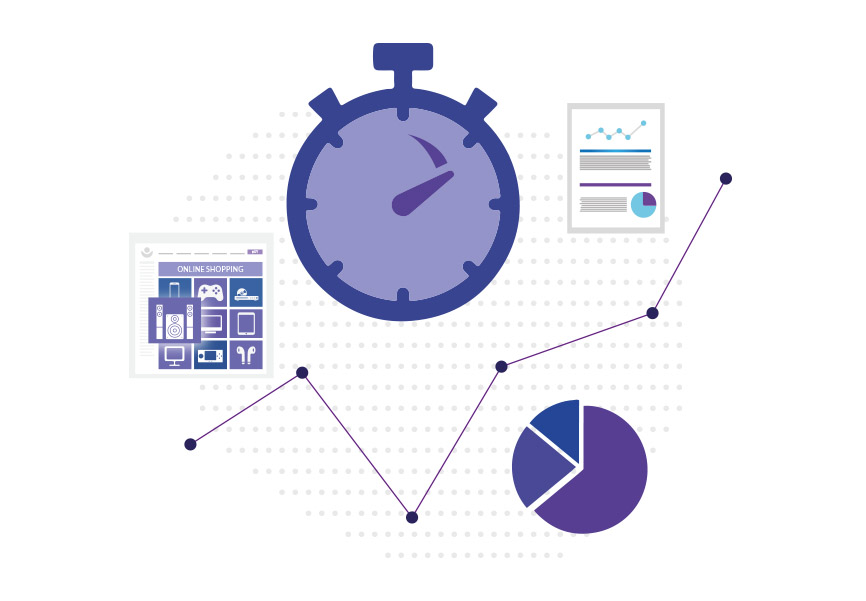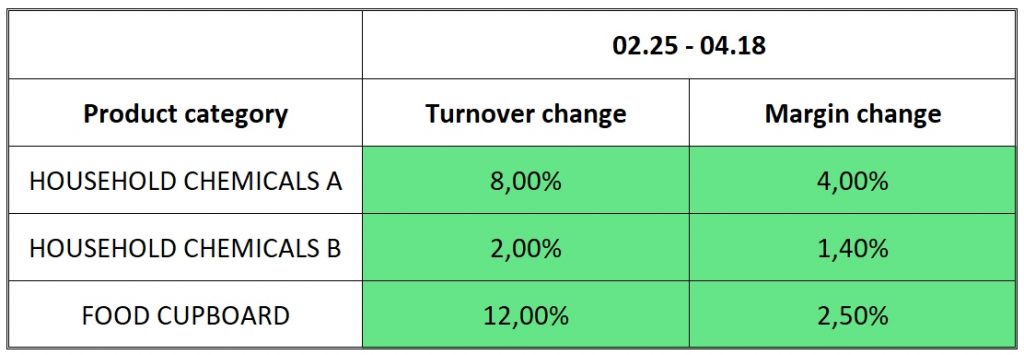The 5-step rule to increase margins and sales in e-commerce

Everyone wants to sell more and at higher prices, but for some, it isn’t always possible as consumers are looking for the best offers. However, there is a way. By setting individual pricing rules and then using price automation algorithms that change prices in selected categories, you can sell more products at a higher margin. Our client, a leader in the e-commerce industry in Poland, managed to increase sales while charging a higher margin. This occurred in the first month of applying the pricing rules.
In addition to using the Dealavo platform to monitor and automate pricing, the client benefited from the advice provided by our team of consultants.
Together with the client, we set two objectives to be achieved between January and April. When setting KPIs, we considered the seasonality of product sales from February to April when the sales volume is lower compared to the period from April to June.
Objective 1: Maximizing the sales while maintaining the margin volume in the category:
HOUSEHOLD CHEMICALS
Objective 2: Maximizing the margin volume while maintaining the level of sales in the product category:
FOOD CUPBOARD
STAGE I – PRICE AND PROCESS ANALYSIS
Understanding the present approach to price management was essential to establishing a new pricing strategy and rules.
We analysed prices and processes based on the client’s internal data. It included last year’s trends, product categories, pricing processes, and existing customer segments and factors influencing their purchasing decisions. In addition to analysing raw data, we also interviewed employees to better understand the processes involved.
STAGE II – COMPETITORS’ PRICES MONITORING
The data would not be complete without information about changing prices in competitors’ stores. Changes in market conditions are one of the key elements based on which recommended prices will be presented in the future. You can read more about pricing rules established on the basis of competitors’ prices here.
STAGE III – STRATEGY. Optimization of regular prices and their implementation
Having the data analysis results, we were able to start establishing pricing rules based on the following elements:
- product price elasticity
- division of products into categories taking into account the above factors per category
Once we defined the appropriate pricing rules, we exported them to the Dealavo system. The client’s task was to upload the recommended prices to the store.
STAGE IV – PRICE AUTOMATION
The best way to apply pricing rules in practice is to automate the price recommendation process using the Dealavo Dynamic Pricing platform. Of course, it’s also possible to calculate prices manually using the collected data – but it is time-consuming and significantly increases the risk of human error.
In the case on hand, we were adjusting the regular prices automatically once a day, based on agreed rules. The prices were recommended to the client, depending on external factors such as changes in regular prices and competitors’ promotions.
STAGE V – MONITORING KPIs AND IMPLEMENTING UPDATES
After applying the new rules and changing prices, we constantly monitored their impact on the consumers’ purchasing decisions and the volume of sales, to modify them if necessary. We were updating the information on prices and availability of competitors’ products daily, and revising the data used to categorize products and determine their price elasticity.
Also, we tested the recommended prices first for ~20% of the SKUs of the categories, and then applied them to other products. With the functionalities of the Dynamic Pricing platform, we also used A/B tests to check which prices were the best.
We also monitored the assumed KPIs.
RESULTS OF THE PRICE OPTIMIZATION PROJECT

As can be seen in the table, the objectives for the product categories were achieved with an excess. It was possible to increase both the sales and the margin (and thus the margin volume), which allowed the client to increase profit from selected categories.
5 STEPS TO OPTIMIZE PRICES BASED ON THE CASE STUDY
We can identify 5 universal steps to increase profit with the pricing policy:
- Analysis of internal historical data.
- Implementation of the platform to monitor competitors’ prices.
- Development of a strategy for price optimization to achieve KPIs.
- Implementation of a price automation tool based on established rules and collected data.
- Monitoring KPIs and making changes to the strategy and pricing rules.
SUMMARY
The primary objective of the project was to maximize sales while maintaining the margin volume for the household chemicals category (A and B). For this category, the tunrover increased by 8% and 2%, and the margin by 4 and 1.4 pp, respectively.
The second objective was to maximize the margin volume while maintaining the turnover for the food cupboard category. The objective was achieved – the margin increased by 2.5 pp, and the sales by 12%.
Is it possible to achieve such an effect in other business models? Yes, it certainly is.
Regardless of the size of business and the types of products sold, it is possible to smartly increase margins. The above 5-step rule applies to 90% of e-stores. Read the case study on the sanitary fittings industry or talk to us and we will help you automate the prices in your store.
If you want to learn more about price monitoring, check our extensive article: What is price checker (price monitoring tool) and how to choose the right one?
If you would like to learn more about Dealavo’s consulting services, please contact Przemysław (Greg) Białokozowicz, VP Product and Services at Dealavo (przemyslaw.bialokozowicz@dealavo.com). Przemysław has 15 years of experience in advising companies on how to increase their revenue with an appropriate pricing, sales and marketing strategy.